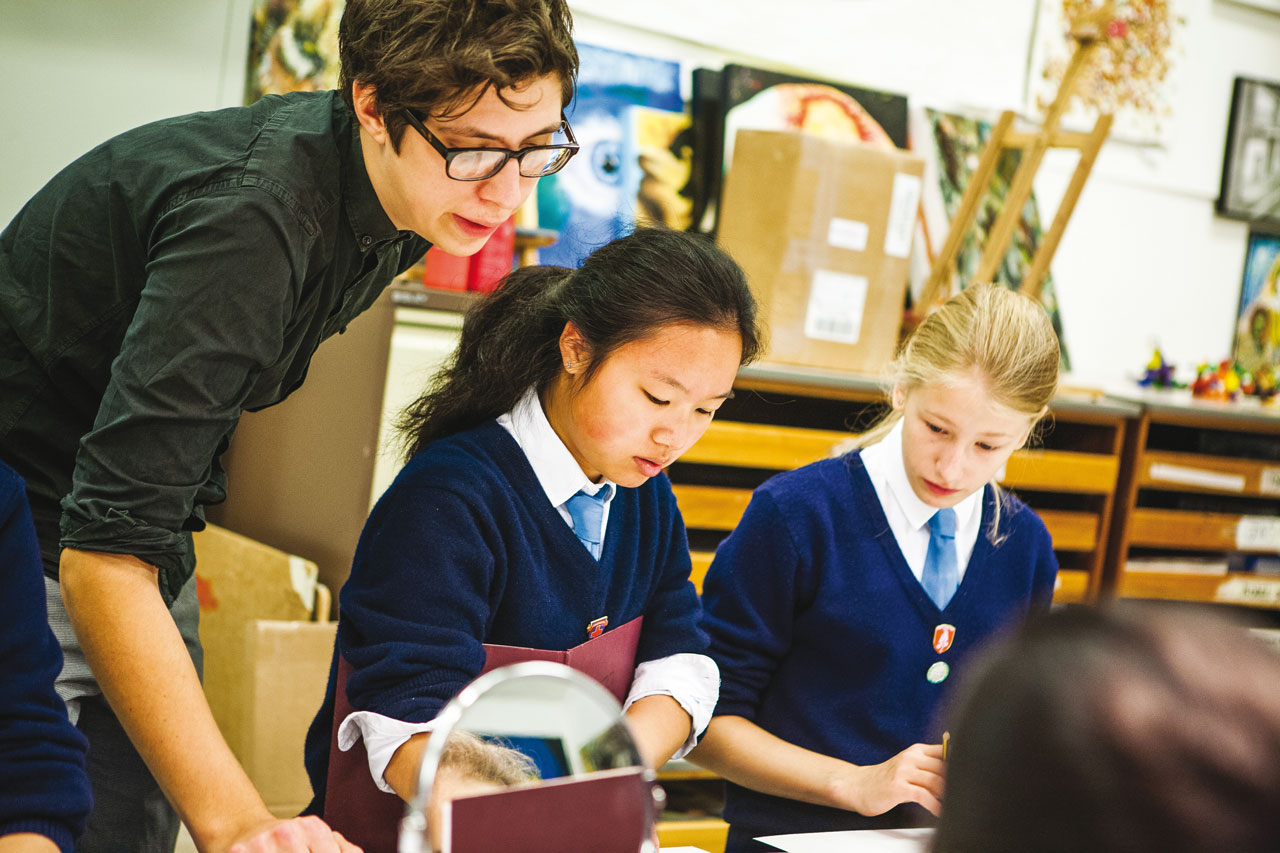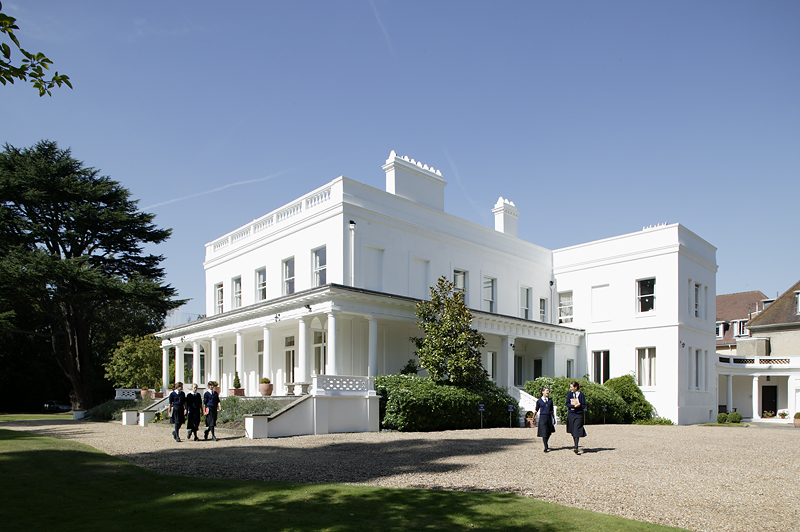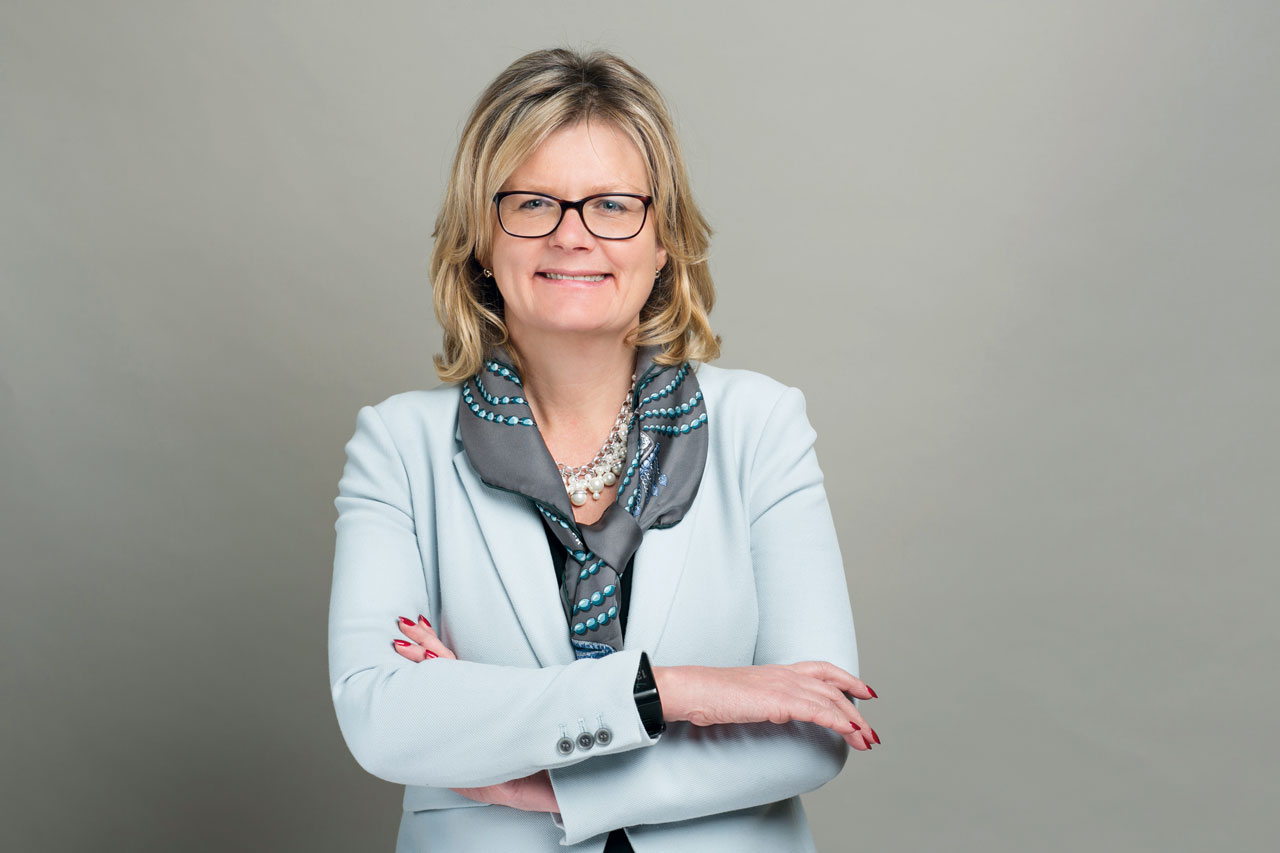The Confidence to Fly: Creativity at Heathfield
By
6 years ago
Marina Gardiner Legge, headmistress of Heathfield School, Ascot, believes that fostering creativity provides the tools to counteract the negative messages of social media


An art lesson taking place at Heathfield
There’s an epidemic out there. Teenage girls are constantly assaulted by messages across all media platforms, particularly social media, telling them how to behave and what to wear, act, do and buy in order to fit in. This barrage breeds a lack of confidence which concerns me deeply as the head of a girls’ school responsible for educating a new generation of women.
With so many detrimental messages flying around, vulnerable young girls can quickly assimilate a negative image of themselves and their abilities and looks, which can hamper their confidence in their potential to achieve. In today’s society it is particularly toxic.
So how to address it? Not all girls are academic, but fostering creativity can help address self-esteem issues and build the confidence to fly. Van Gogh said, ‘If you hear a voice within you say “you cannot paint,” then by all means paint, and that voice will be silenced.’

Heathfield School, Ascot
A recent study in 2012 found a strong correlation between raised creativity and higher levels of self esteem in both sexes. However, it was more pronounced in females, interesting given that an earlier study in 1999 found that self esteem tends to be higher in men than women as a norm.
Although, in an educational world which demands increasing accountability and where linear examinations are the primary form of differentiation, such an emphasis on creativity may seem counter-intuitive. Yet a US study found that students who were asked explicitly for creative answers to problems outperformed other students of the same ability in multiple choice memory tests.
An explicit focus on creative approaches is also highly effective in subjects requiring extensive memorisation. For example, girls at Heathfield created a rap song to remember the order of elements in chemistry; in psychology, brightly coloured mind maps adorn the walls and in academic PE, a Tube map was made to connect body parts by movement.

Marina Gardiner Legge, headmistress of Heathfield School
To be successful, this process starts with the selection process. Good schools find out and focus on what children can do rather than highlight what they can’t. Those who speak English as a second lanuage or have special needs may have a highly developed aesthetic sense, despite not scoring highly in linguistic or numeric assessments. Therefore, including creativity in an assessment is essential to gauge a child’s potential.
It is important that students can learn these lifeskills in a safe and supportive environment before entering adulthood. Girls at Heathfield direct, run and manage the annual fashion show while others photograph, film and review it. The musicians collate and rehearse performances for the termly musical concert. I am proud of the many girls who write their own songs, sharing their feelings in public. Some pupils recorded a CD in our own studio which they then sold for charity. The wonderful thing about creativity is that once it is celebrated it becomes apparent in all aspects of life.
Creative subjects engender confidence enabling young people to explore and validate their own experiences in both positive and negative ways, therefore becoming the best versions of themselves. ‘Once we believe in ourselves, we can risk curiosity, wonder, spontaneous delight, or any experience that reveals the human spirit,’ said E.E. Cummings. It is that self-belief that I want to see fostered in all girls.
READ MORE: STEM or STEAM? Don’t Forget the Importance of the ‘A’ – Art | The Best Schools for the Creative Arts



